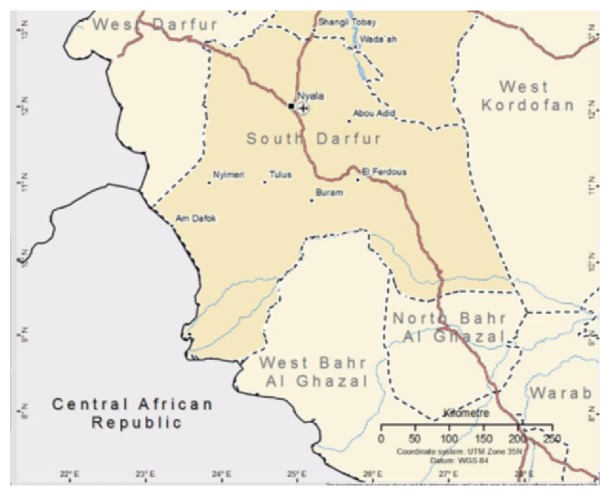A Survey of Seasonal Gastrointestinal Parasitic Infections in Donkeys from a Semiarid Sub-Saharan Region, Sudan.
IF 1.1
Q4 MICROBIOLOGY
引用次数: 18
Abstract
Out of 92 donkeys examined for gastrointestinal parasites, 90 animals were found infected by one or more gastrointestinal parasites with an overall prevalence rate of 97.78%. The distributions of the recovered parasites in the different parts of the body were as follows: stomach, 92.4%, small intestine, 19.6%, caecum, 88%, colon, 80.4%, rectum, 73.9%, and cranial mesenteric artery, 64.1%. A significant difference was found between mean parasite counts and seasons. Hot wet season had higher mean parasites count (5411.5 ± 1694.4) in comparison with hot dry (1795.9 ± 399.6) and cool dry (1719.9 ± 522.4) seasons. Although there was no significant difference between age and mean parasite count, animals more than four years old had high mean count (3361.3 ± 921.8) in comparison with 2330 ± 744.3 and 2030.2 ± 873.1 for young and adults animals, respectively. No significant positive or negative correlation was found between total parasite counts of infected animals and any of the climatic factors. The parasites identified were Habronema spp. (40.2%), Trichostrongylus axei (30.4%), Parascaris equorum (18.5%), Anoplocephala perfoliata (4.35%), Gastrodiscus aegyptiacus (8.7%), large strongyles (84%), small strongyles (72%), and Oxyuris equi (1.1%).



苏丹撒哈拉以南半干旱地区驴季节性胃肠道寄生虫感染调查
在92头驴的胃肠道寄生虫检查中,有90头驴感染了一种或多种胃肠道寄生虫,总患病率为97.78%。各部位寄生虫检出率依次为胃92.4%、小肠19.6%、盲肠88%、结肠80.4%、直肠73.9%、颅肠系膜动脉64.1%。平均寄生虫数量和季节之间存在显著差异。湿热季节平均寄生虫数(5411.5±1694.4)高于干热季节(1795.9±399.6)和干冷季节(1719.9±522.4)。虽然年龄和平均寄生虫数无显著差异,但4岁以上动物的平均寄生虫数(3361.3±921.8)高于幼年和成年动物,分别为2330±744.3和2030.2±873.1。感染动物的寄生虫总数与任何气候因素之间均未发现显著的正相关或负相关。经鉴定的寄生虫依次为Habronema spp(40.2%)、axei毛圆线虫(30.4%)、equorum副蛔虫(18.5%)、perfoliata Anoplocephala(4.35%)、Gastrodiscus aegyptiacus(8.7%)、large strongyles(84%)、small strongyles(72%)和Oxyuris equi(1.1%)。
本文章由计算机程序翻译,如有差异,请以英文原文为准。
求助全文
约1分钟内获得全文
求助全文

 求助内容:
求助内容: 应助结果提醒方式:
应助结果提醒方式:


